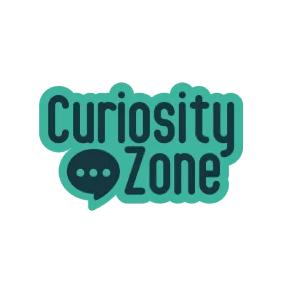
How Do We Educate Kids in the Age of AI?
By Steve Lear
We Have to Rethink the Purpose of Education
A Reflection on Educating Kids in the Age of AI
With this question, Ezra Klein launches a compelling conversation with Rebecca Winthrop, director of the Center for Universal Education at the Brookings Institution, about educating kids in the age of AI.
Their discussion provides valuable insights into how AI impacts the classroom—and how parents and educators can respond.
Winthrop notes that AI can be a valuable educational tool provided it’s used effectively. Kids who use it responsibly might use AI for research and editing assistance when writing their papers. However, kids who are disengaged – either because the work is too easy or too hard – might use AI to do the writing for them, which means they are not learning the essential critical thinking skills needed to write an essay.
Winthrop believes that motivation is the most important predictor of how children perform in school; in fact, it may be the most crucial skill children need. Motivated kids are constantly learning new things, which helps them navigate change.
But to become deeply engaged in learning, each student must find the subject, teacher, or approach that sparks their interest. “Once motivated,” said Winthrop, “your internal drive makes you engage more, you lean in more, enjoy it more. This motivation spills into other areas,” allowing students to better cope with things they don’t enjoy as much.
She cautions parents that good grades and good conduct reports are not reliable indicators of engagement. Instead, parents should look for the following behaviors: can kids identify their interests, and do they know how to get new information? Do they interact well with others? And in addition to reading and writing, do they also know how to speak and listen? She defined this last skill as a missing piece of literacy.
Klein wonders whether AI will eventually replace teachers because it can tailor training to meet each person’s specific needs. Winthrop assures Klein that 100% personalized instruction for each student is not the goal. She points to the adaptive learning methods that private schools have been implementing for years, which offer a vital mix of individual and collaborative learning time. Perhaps the best use of AI would be to model that format, utilizing tech assistance to teach skills development and knowledge acquisition during part of the day, while spending the remainder of the time on group activities, such as building bridges, learning financial literacy, and playing sports.
Kids learn best alongside one another, because education involves much more than academic learning; kids also need to learn social interaction skills, such as self-regulating their emotions, understanding different perspectives, and asking for help.
To harness AI effectively, Winthrop believes it’s necessary to make changes in the classroom and regulate the use of AI. We have given kids access to something that was never developed for them. She suggests giving AI to teachers first, so they can determine how it can best assist their students. It could then be shared with school leaders, who can use it to restructure learning environments that allow students to explore their interests and passions.
While both Klein and Winthrop are in favor of a no-screens policy in schools, they agree that it’s critical to teach kids AI literacy skills. Winthrop called on the large AI labs to develop AI specifically for kids and to include educators in that process. This would establish important guardrails and ensure that AI training is based on verifiable and legitimate sources. Klein agrees with Winthrop’s bottom line:
“Schools should not be the place where we learn to partner with machines, but rather develop our specifically human faculties, so that we become capable, flexible, and attentive as we move through a world that we can’t predict. “
This thinking aligns with our goal to introduce a new curriculum called Life-O-Nomics. It will focus on teaching emotional intelligence, civic literacy, financial competency, and vocational clarity to youth aged 15 to 25. By teaching these practical, real-world skills, we can develop competent and resilient young adults who are prepared for life beyond the classroom.
I have become very fond of the role of educators and believe they will be the spark that helps repair the world. While that’s a big responsibility, I sense our country is ready to start thinking about how non-educators can assist them. Outlined below are the critical steps each group needs to take:
CALL TO ACTION: Non-educators
- Fund organizations that train and develop educators.
- Lobby legislators to financially support your state Department of Education.
- Ask your Department of Education to establish stakeholder working groups that include students to help determine how to allocate state funds to school districts. How can a state legislature know where money is needed without this input?
CALL TO ACTION: Educators
- Promote the inclusion of life skills education into the curriculum and incorporate toolkits that teach our young people to be both wise and smart.
- Recognize that everyone is underpaid at the beginning of their careers and overpaid in the last ten years.
- Be inspired that you are the spark that will help repair the world!
To hear more of Ezra Klein’s thought-provoking discussion, you can listen to the full episode at Apple Podcasts or watch it on YouTube. We hope it will inspire you to join us in funding training for our teachers, so they can effectively prepare young people to become capable adults.

